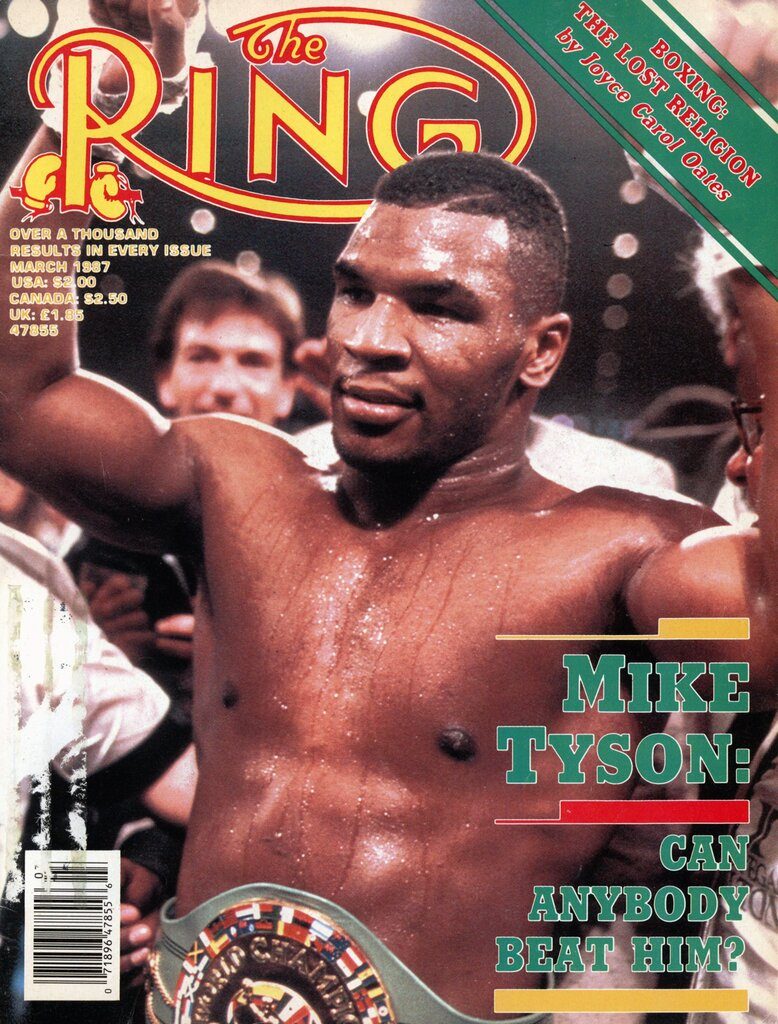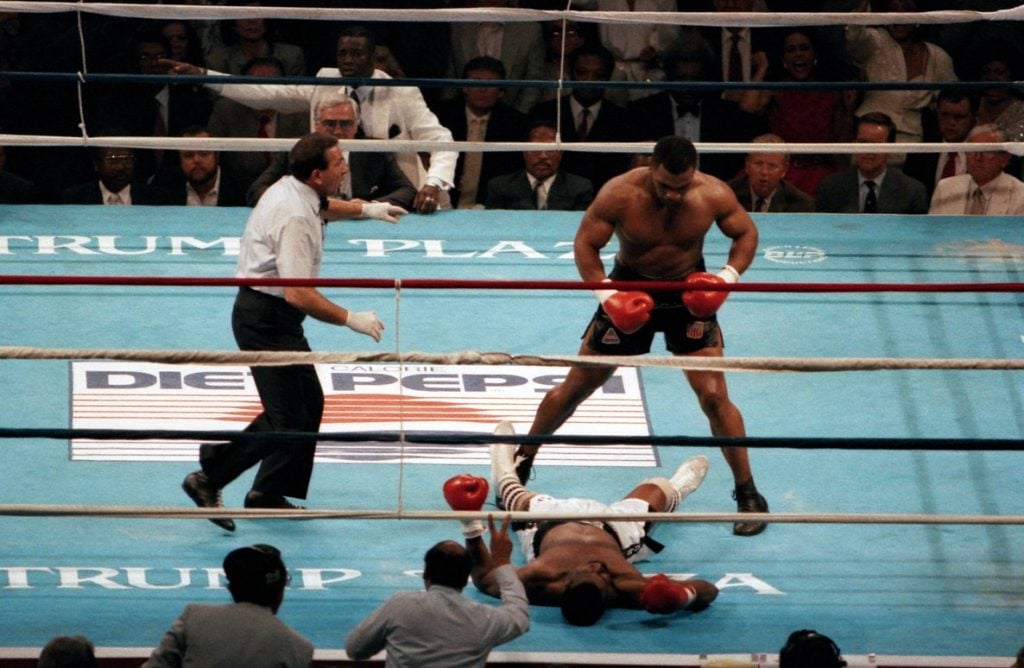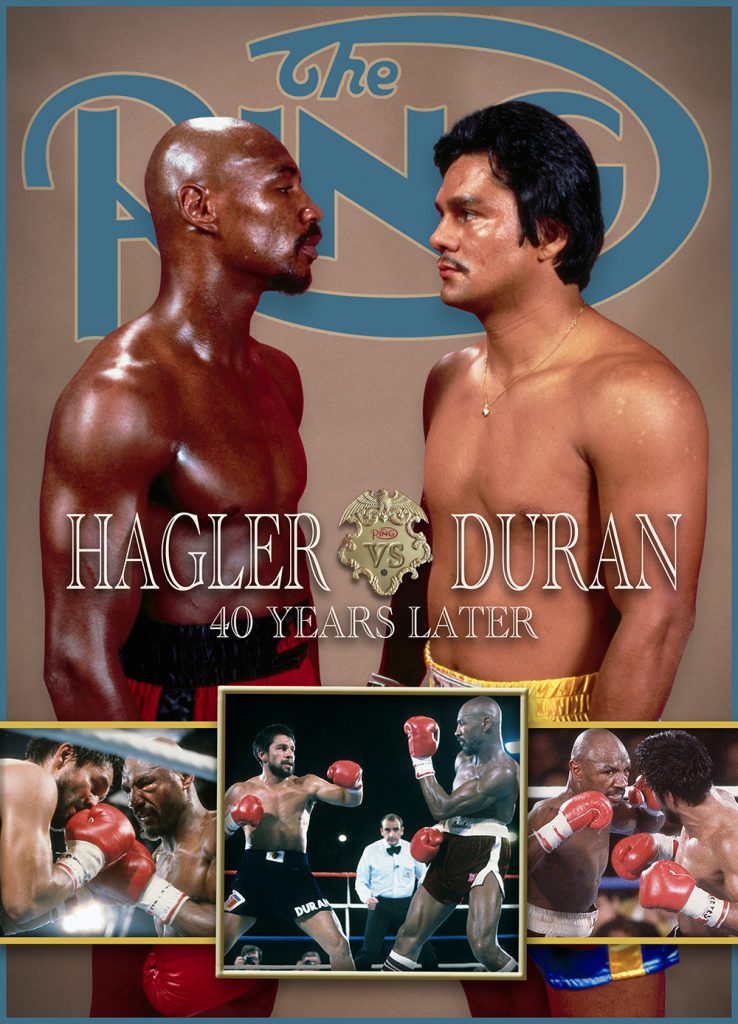Mike Tyson: Just how good was the former undisputed heavyweight champion of the world?

During the mid-1980s-early 90s, Mike Tyson was at his fearsome, menacing best, an intoxicating mix of speed and devastating power. He was must-watch TV each and every time he fought.
Young but physically mature, Tyson teamed up with Cus D’Amato in 1980, and the legendary boxing guru quickly became a father-figure. He had a positive influence on the volatile fighter and helped harness his emotions and keep him on the straight and narrow.
Tyson did well as an amateur in the juniors and attempted to make the 1984 U.S Olympic team. However, he lost twice to eventual U.S. representative and gold medal winner Henry Tillman.
In March 1985, at the age of 18, Tyson turned professional. He was extremely active, winning 19 straight bouts inside the distance, 11 of them inside a single round.
In November 1986, a 20-year-old Tyson became the youngest heavyweight titlist in history when he stopped WBC beltholder Trevor Berbick in two.

March 1987 issue
“Iron” Mike went on to become the undisputed heavyweight champion of the world. As his star ascended, he transcended boxing and became arguably the most recognizable face in sports. He was The Ring Magazine Fighter of the Year in 1986 and 1988 and sat atop the mythical pound-for-pound list until he was shockingly knocked out by Buster Douglas in February 1990.
Convicted of rape in 1992, Tyson served three years of a six-year sentence in an Indiana prison. Returning to boxing in August 1995, the former champion feasted on some light competition before regaining WBA and WBC titles.
But following a brace of losses to Evander Holyfield, Tyson’s ambition and drive deteriorated. In June 2002, Lennox Lewis dominated him en route to an eighth-round knockout win and that was his final championship fight.
He retired in 2005 with a record of 50-6 (44 knockouts) and was inducted into the International Boxing Hall of Fame in 2011.
On Saturday, the ex-champ will face Roy Jones Jr. in an exhibition matchup.
Here we speak to former amateur rivals, ex-coaches, sparring partners and former opponents who assess just how good Mike Tyson was:
AMATEUR RIVALS, COACHES, SPARRING PARTNERS
TEDDY ATLAS
Trained an adolescent Tyson
“As far as most pure, God-given talent… raw, from the earliest stage that you saw, it would have to be a 12-year-old Tyson, who was 190 pounds but no fat. He had to impress me and Cus; he had to box his first day with a 27-year-old man who was a professional fighter and he was able to do that. Tyson had a tremendous chin and a helluva neck for shock absorbers. His neck was close to 20 inches. Anyone who could be knocking out men when he’s 12, 13 years old is a damn good puncher. He learned the technique to make you miss and catch you clean, but power’s power and punchers are born not made. Tyson’s maybe one of the best punchers in history. You’re developing a guy who’s 12 years old, and you can’t put him in with kids to spar because there are none. You’re hiring sparring partners, and they’re men, and he’s hurting them and knocking them out.”

STEVE LOTT
Assistant Manager
“In the 1970s, the managers [Jim] Jacobs and [Bill] Cayton were funding the training camps of Cus D’Amato. In 1980, they got Mike Tyson and I really started working with him in 1985. [I worked on every detail]: sparring, medicals, interviews, training, the weigh-in before the fight, after the fight, food, transportation. We had eight sparring partners, each guy getting $2,500 a week. That’s an immense amount of money and the reason was because word got around that in sparring, Mike was bad (laughs). With all due respect, Mike’s sparring partners back then would be heavyweight champions now. I knew Mike pretty well from 85′ to 88′, we shared an apartment together in New York. He loved being champion, it was such a pride for him, what Cus always dreamed he would be doing. If he liked you, he’d put his arm around you. With friends he was very affectionate. Working with Mike was exciting, but the pressure was beyond enormous. For some reason, he never relaxed in a professional fight. He did it one time against Reggie Gross, where Mike was spectacular moving his head, and he only did that once in his 28 fights with us. In training he was a good 50, 60, 70 percent of his ability. In a real fight 20 percent, yet he blew out an entire division. There was stuff he did in sparring that if Mike did in a fight, they’d outlaw boxing, that’s how vicious he was. If Cus was around and there was a DVD of all the fights and we just watched the action, Cus would not be impressed. He would be very unhappy because what he taught Mike to do was not what Mike did in the ring. Mike left us when he was 21 years old. I don’t know how much better he would have got. If he had become more relaxed, he would have gone from 20 to 30, 40, maybe 50 percent.”

AARON SNOWELL
Trained Tyson from 1988 to 1992
“I started training Mike in 1988 after he fought [Michael] Spinks. When I first started training Mike Tyson he was over 300 pounds and was going through his divorce with Robin Givens. We worked on conditioning and diet to get his weight down, then we started working on his speed. We were doing it for quite some time until he fought Frank Bruno [in February 1989]. Mike has a good side and like anybody he has a bad side. When he puts his mind to accomplish something he works diligently at it. Don’t let his antics and what people say [cloud your judgement], Mike’s a dedicated person. I’ve been around some of the greatest heavyweights of all time, including Muhammad Ali. I trained Tim Witherspoon, Tyson, Michael Dokes, Greg Page, Pinklon Thomas. Mike is phenomenally fast and has technique and power. He had phenomenal speed for a heavyweight. I trained him all the way up until he went to prison.”
FORMER PRO OPPONENTS
JAMES “BONECRUSHER” SMITH
March 7, 1987, Las Vegas Hilton, Las Vegas, Nevada • Titles: WBA and WBC heavyweight
“HBO had a tournament. I beat [Tim] Witherspoon to win the WBA title, [Tyson] beat Trevor Berbick to win the WBC title and we fought each other. HBO was trying to have a box-off to have one champion and Mike ended up being the undisputed heavyweight champion. The media had him built up as an invincible person. We fought in Las Vegas, which is crazy under normal conditions, but fighting a guy like Tyson, it was a crazy situation. I guess I got caught up in the hype, I was bigger, stronger and smarter than Tyson. I could have beat him if I’d listened to my trainer. I backed up a little too much. He was able to slip punches and come back with combinations, he was real quick. He was strong inside, he was trying to rip his punches. If he’d been as big as I was, he’d really hurt guys. Being older helped, I was able to handle it because I’d been around a little while. He was good, you can’t become heavyweight champion of the world without being good. He was a small heavyweight, and I think the media had him built up and he was riding on that media hype. He worked it and made a lot of money off it.”

Tyson (right) produced one of his most brutal finishes against Pinklon Thomas. Photo from The Ring archive
PINKLON THOMAS
May 30, 1987, Las Vegas Hilton, Las Vegas • Titles: WBA and WBC heavyweight
“Mike was a very nice young man. If it wasn’t for Jim Jacobs, the fight probably wouldn’t have been made. Jim gave me an opportunity because he felt I deserved it. Mike was coming up, he was creaming everybody, knocking ’em dead. He was a gladiator. I was 29, he was 20. I was training at the Ruby Street gym in L.A with Ken Norton and Scrap Iron Johnson. I exchanged punches with my sparring partner and my right shoulder popped. I went to a chiropractor and he told me to put some ice on it and come back in a few days. I continued to work, but every time I worked my shoulder, it would pop out. I called Angelo [Dundee] and told him, ‘Angelo, my shoulder keeps popping out, I don’t know what’s going on with it.’ He said, ‘Pull out the fight.’ I said, ‘No, I’m not pulling out this fight. I’m willing to fight.’ Mike was beating everybody and I thought I could beat him with my left hand. Mike came out steaming and I was anticipating that. After I got through the first and second round, I thought, ‘I’m in good shape now.’ With my experience I was doing what I needed to do, but unfortunately my shoulder popped out and my glove split. I don’t make no big deal about that, Mike’s a good fighter, he did what he had to do. I got dropped, but I got up because I didn’t want to be counted out. I’ve got a lot of respect for Mike. I think he was a great champion.”

TONY TUCKER
August 1, 1987, Las Vegas Hilton, Las Vegas • Titles: Undisputed heavyweight
“Tyson was short, strong, real quick and he could take a punch. He had a real quick jab. Mike was very strong. I hit him with a good left uppercut that he stood up to.”

TYRELL BIGGS
October 16, 1987, Convention Hall, Atlantic City, New Jersey • Titles: Undisputed heavyweight
“In the amateurs you’re still green and I was better than him at that time. Once he turned pro, he stayed at it, improved on the things he needed to improve on and became the better fighter. He was on top form. I think that night he would have beat Holyfield, knocked out Lewis, he would have beat anybody that night. I think he’d have been a handful for anybody in history on that night. He would swing those hooks and you wouldn’t see them coming. He was very quick. Tyson was in a different mindset in the 80s.”

TONY TUBBS
March 21, 1988, Tokyo Dome, Tokyo, Japan • Titles: Undisputed heavyweight
“Tyson had power, speed and a pretty good chin. Tyson was a comer; he was like a Joe Frazier. He depended on hitting, and he was a fast hitter. He had short arms, but when he got in he could dig, so you don’t want to let him get in. When Tyson hit me I felt dazed. When you’re younger you can take the punches better than when you get older. He was in his prime, he was a force of nature.”

Tyson gained universal recognition as heavyweight champ by smashing Michael Spinks in one round. Photo from The Ring archive
MICHAEL SPINKS
June 27, 1988, Convention Hall, Atlantic City • Titles: Undisputed heavyweight
“He had good handspeed, that was one of his biggest assets. He had power and handspeed and that was hard to beat. He knew how to get in real fast, that was one of his strengths too. He’d slide up on you real quick and get in the punches. He was very strong, I don’t know what made him so strong. Mike Tyson was most definitely the biggest puncher I ever fought. Larry Holmes was undefeated [until I beat him]. Tyson had to be the best [I fought] because he beat Larry Holmes and me.”

FRANK BRUNO
February 25, 1989, Las Vegas Hilton, Las Vegas • Titles: Undisputed heavyweight
March 16, 1996, MGM Grand, Las Vegas • Titles: WBC heavyweight
“It’s like meeting anyone else, I’m there to do my job. I never had him on a pedestal. I knew he was tough, but when you’ve got the bug to fight, a challenge is always welcomed. Mike and I spent quite a lot of time together in training camps, so I knew him before I fought him. In the ring, he was just another boxer who wanted to beat me and in turn I wanted to beat him. Tyson had the fastest hands, he was a good all-rounder and a brilliant attacker. He was able to multitask by reading my moves and punch at the same time, as well as being able to dodge. His punches came very quick given his size. He was definitely an animal in the ring. He knew what he wanted and went for it; massive determination to win. Tyson had it all: the hunger to win the belts, to fight, to move and the determination to take anybody down that crossed him at his peak. He knew the quicker he could get rid of his opponent the less chance he would get caught.”

BUSTER DOUGLAS
February 11, 1990, Tokyo Dome, Tokyo • Titles: Undisputed heavyweight
“It was great in Tokyo, but you got the sense nobody was taking it seriously. I never doubted it at all. I knew it was my time. Leading up to the first title fight [against Tony Tucker] in 87′, I was actually given a pretty decent chance of winning the fight. Losing that fight really made it seem like, ‘He might as well pack it in. I don’t know what he’s fighting for.’ Then coming back around and getting a title shot against Godzilla, was like, ‘Oh my God, he’s really gonna kill himself!’ Succeeding was the ultimate, ‘I told you so.’ Tyson was a student of the game, [he] was in there til’ the end, showed a lot of savvy.”

HENRY TILLMAN
June 16, 1990, Caesars Palace, Las Vegas • Titles: None
“I fought Mike twice in 1984 at the Olympic trials. The first time was in Dallas, the second time was at Caesars Palace, Las Vegas, and the third time when I fought him as a pro, was also in Caesars Palace. He was my alternate, so we sparred getting ready for the Olympics. Me, Tyrell [Biggs], [Evander] Holyfield, Tyson, we all round-robin sparred. Tyson punched hard, fast, he was hard to hit, he had quick feet and hands. He was a helluva fighter. I was the first fight he had after losing to Buster Douglas. It was huge, everybody wanted to see what he was going to do. I had beat him twice, so it was hyped up. He used that loss as positive adrenaline. I had the same Tyson but a little bit bigger, a little bit stronger and a little bit smarter. He’d improved, most definitely. With him being smaller but very powerful he took advantage and used it against bigger opponents. With his speed, agility and change of angles, he’d switch from southpaw to orthodox and he was so quick that you wouldn’t even notice.”

Holyfield on the attack against Tyson. Photo courtesy of Getty Images
EVANDER HOLYFIELD
November 9, 1996, MGM Grand, Las Vegas • Titles: WBA heavyweight
June 28, 1997, MGM Grand, Las Vegas • Titles: WBA heavyweight
“I brought in David Tua because he was perfect sparring. He was getting the best of me but, remember, I was sparring with three other guys (laughs) and he was last in. My nephew called me and said, ‘(Team Tua) are calling Shelly Finkel and saying they’re getting the best of you.’ I said, ‘All right, just put him in (for sparring) today; we’ll show him.’ They put him in, and I stopped him. That one spar. All of a sudden, (Team Tua) called Shelly and said, ‘Holyfield just bust him up!’ (laughs) The whole thing in sparring is to practice what you need to do in a fight. There was no intimidation [when I faced Tyson]. With me, I just realized I wasn’t going to get beat by a reputation. My mom said, ‘To be a champion, you have to beat the champion. Don’t let a reputation beat you.’ He was dangerous. When the fight was made, his team tried to make him mad and they hoped I’d get scared. But I was accustomed to being hit and I knew Mike wasn’t. I practiced hard and did what I was supposed to do.”
John Scully and Bob Yalen helped co-ordinate various parts of this feature. The Ring appreciates their assistance.
YOU MAY HAVE MISSED
ROY JONES JR.: JUST HOW GOOD WAS THE FORMER POUND-FOR-POUND KING
Questions and/or comments can be sent to Anson at [email protected] and you can follow him on Twitter @AnsonWainwright
SUBSCRIBE NOW (CLICK HERE - JUST $1.99 PER MONTH) TO READ THE LATEST ISSUE
















